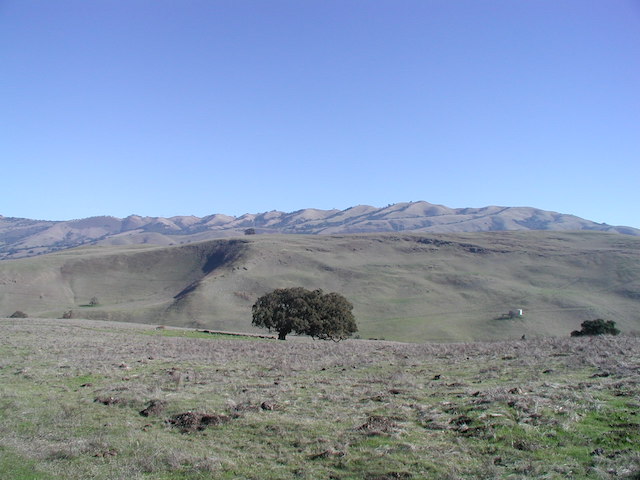Alert the FBI! Someone has stolen and hidden away most of the land in the United States. At least, that’s the message I get from a recent Wall Street Journal article that claims that “the U.S. is running short of land for housing.”
More than 600,000 acres of land like this can be found outside of San Jose. It isn’t prime farm land, nor is it too steep to build on. Yet San Jose has some of the most expensive housing in America because almost no one can see that this land is available for housing.
According to a 2017 land inventory by the Department of Agriculture, the contiguous 48 states have about 1.9 billion acres of land. Of these, about 116 million have been developed (including rural developments such as roads and railroads). Another 406 million acres are federal. The USDA doesn’t say so, but about 70 million acres are state land. An unknown number are county or city lands, but it is probably under 50 million acres.
That leaves 1.25 billion acres of land that could be used for housing, which is more than ten times as much land as all the urban areas and other developments in this country combined. Many of these acres are right next to the cities that claim they are short of land for housing. For example, 70 percent of the San Francisco Bay Area remains undeveloped. Only about 6 percent of the Willamette Valley, home to two-thirds of Oregon residents, has been developed. Even crowded Honolulu, one of the most expensive housing markets in the country, is more than 60 percent rural.
The Wall Street Journal article implicitly admits that this land exists (though it never says how much there is), but claims that “land-use restrictions” prevent development of new homes. But the restrictions mentioned are rules that prevent the construction of multifamily housing in Tampa and its suburbs. The article doesn’t say anything about restrictions that prevent the construction of single-family homes in California, Hawaii, Oregon, Washington, and other states with growth boundaries and similar rules.
Inanely, the Journal also blames high housing prices on the lack of light rail. Nashville voted not to spend $5 billion on a single light-rail line, which is somehow “putting a premium on scarce land close to the city center.” That can hardly be true considering that Nashville doesn’t have many jobs in the city center and even fewer people in the region take transit to work.
It appears that the one-time free-market Wall Street Journal has joined the one-time free-market Cato Institue and one-time free-market Mercatus Center and supporting the government planners who want to force more Americans to live in apartments and ride transit rather than live in single-family homes and drive cars. People continue to be willfully blind to what is right in front of their eyes: millions of acres of land that could easily be used to make housing affordable again and allow more people to achieve their dreams of owning a single-family home.









It’s not land it’s desirable land.
California is expensive, it’s urban growth boundaries are not solely government based they’re demand based; like everyone wanting to be near the coast and foremost of all Geography based………… Mountains and agriculture to the north, Pacific ocean to the west, Scorching desert to the East and that shithole called Mexico to the South, People build civilization WHERE THERE’S WATER.
You wanna live in the desert; that’s fine, but this delusion you can take with you the East Coast vegetation and style of housing. Get used to water restrictions, driving 200 miles to go somewhere interesting, spending a lot of your time indoors with the AC on cause it’s Hot.
Visit Monaco, Istanbul, Rome and Barcelona if you want examples of excellent and immaculate architecture in hot/dry climates.
Prone to wildfire, excessive drought, there’s no culture or city attraction and you’re hundreds miles from the body of water.
Prince, now king was a ass… but had a huge love with traditional architecture….
https://www.newyorker.com/news/letter-from-the-uk/king-charless-vision-of-britain-writ-small